The Foundation of Organic Lead Generation
Every successful lead generation strategy starts with a solid foundation. An organic lead generation plan not only saves you money by eliminating the need for ads but also builds long-lasting relationships with your audience. This foundation will be structured around the three C’s: Content, Connection, and Collaboration.
Top of Funnel: Creating Awareness
The top of the funnel is all about creating awareness for your business. This can be achieved through various content channels. Here are the three C’s to focus on:
- Content: This includes social media platforms, blogs, and any content that makes your business known. Popular platforms include YouTube, LinkedIn, Instagram, Google My Business, and blogs. Depending on your audience, you may choose different channels.
- Connection: This involves reaching out to potential customers through direct messages, cold emails, and engaging in relevant Facebook groups to generate interest in your services.
- Collaboration: Partnering with others can amplify your reach. This can include guest appearances on podcasts or YouTube channels, where you can share your expertise.
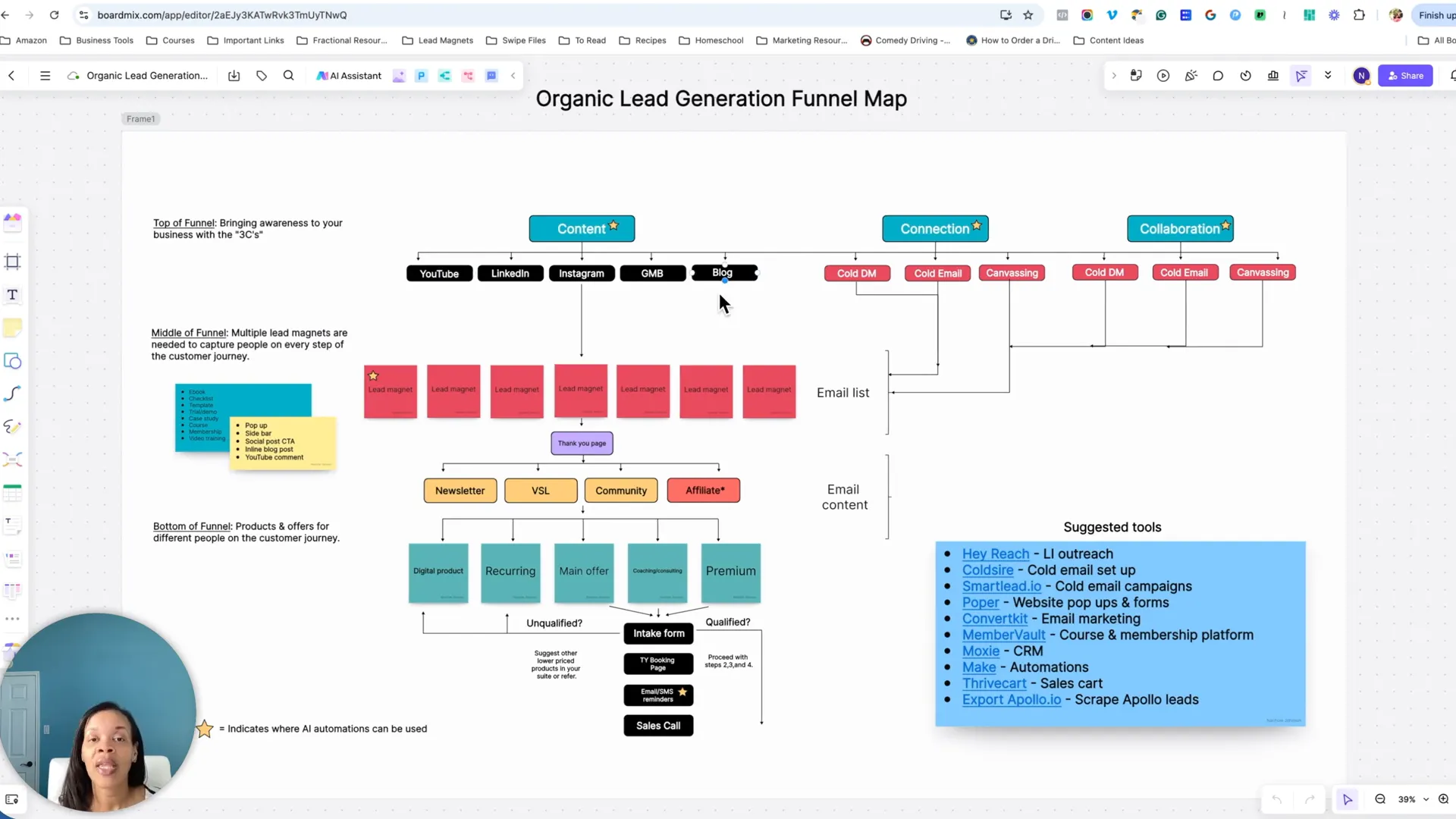
Utilizing Content for Maximum Reach
Content is a crucial element in the organic lead generation funnel. By producing high-quality content, you can increase your visibility and drive traffic to your website. Here’s how to optimize your content strategy:
- Create long-form YouTube videos that can be repurposed into shorter clips for social media platforms.
- Write blog posts that can be optimized for search engines, attracting organic traffic.
- Consider additional platforms like Pinterest, which acts as a visual search engine.
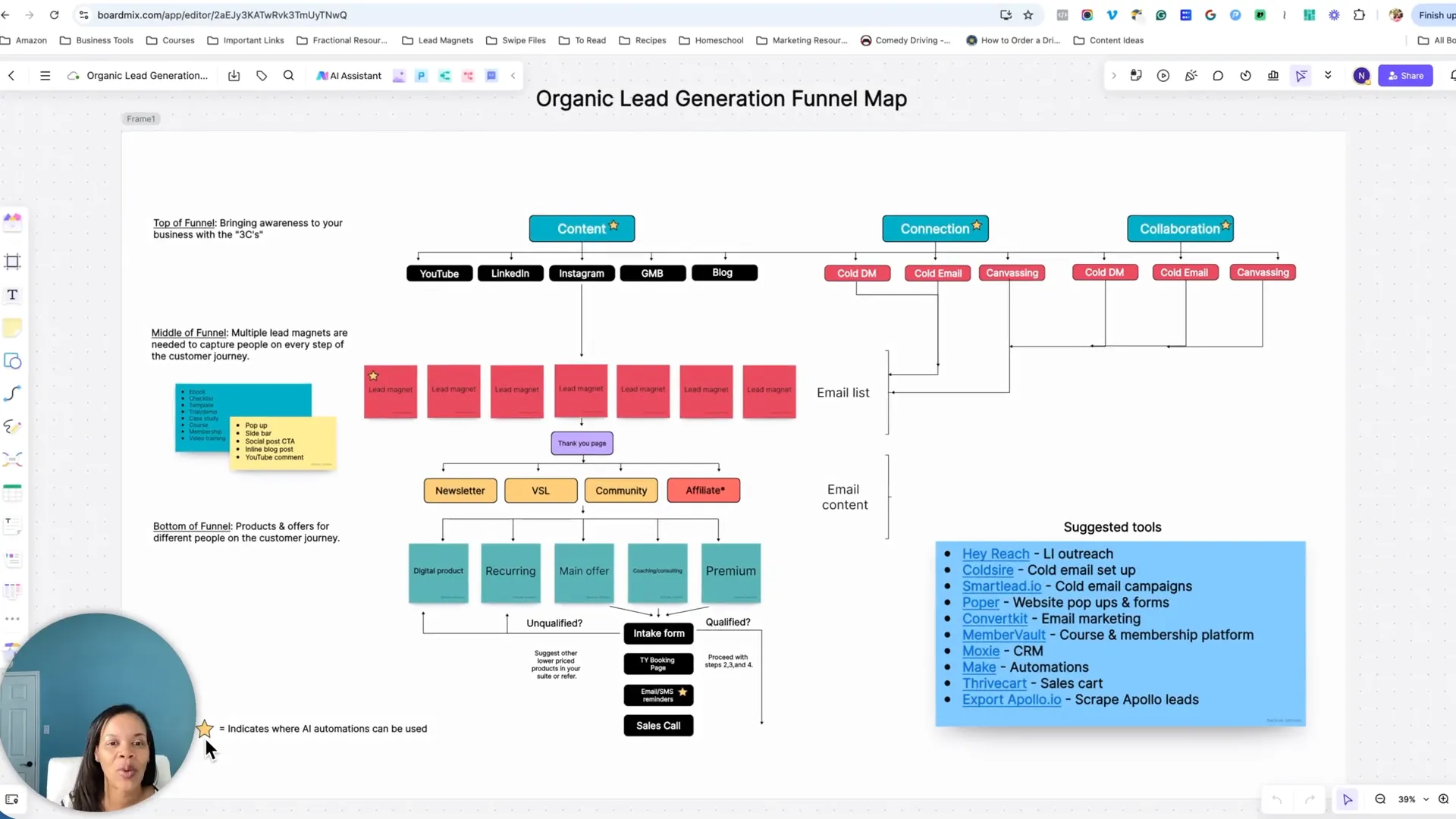
Middle of Funnel: Nurturing Leads
Once you have generated awareness, the next step is to nurture those leads. This is where lead magnets come into play. Lead magnets are valuable resources offered for free in exchange for contact information. They can take various forms, including:
- Ebooks
- Checklists
- Templates
- Free trials or demos
- Video training courses
Having multiple lead magnets allows you to cater to different segments of your audience. For instance, if you offer high-ticket coaching programs, consider creating lower-priced products or lead magnets for those who may not yet be ready to invest at that level.
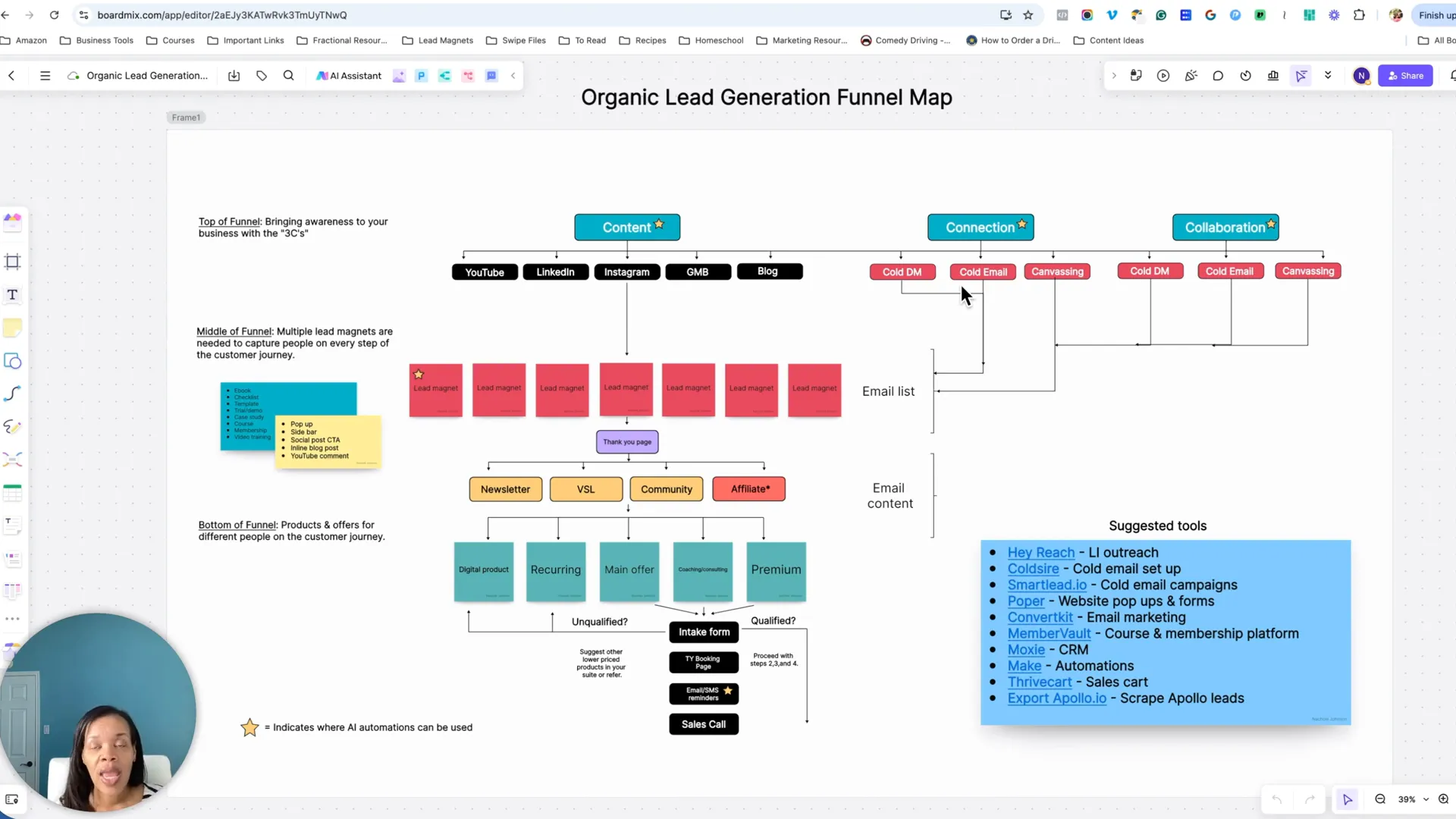
Effective Placement of Lead Magnets
To ensure your lead magnets are effective, they must be visible. Here are some strategic placements:
- Feature them on your website’s landing page and throughout different sections.
- Include them in blog sidebars to capture readers’ attention.
- Utilize social media posts to promote your lead magnets.
- Leverage YouTube by mentioning your lead magnets in videos and pinning the link in comments.
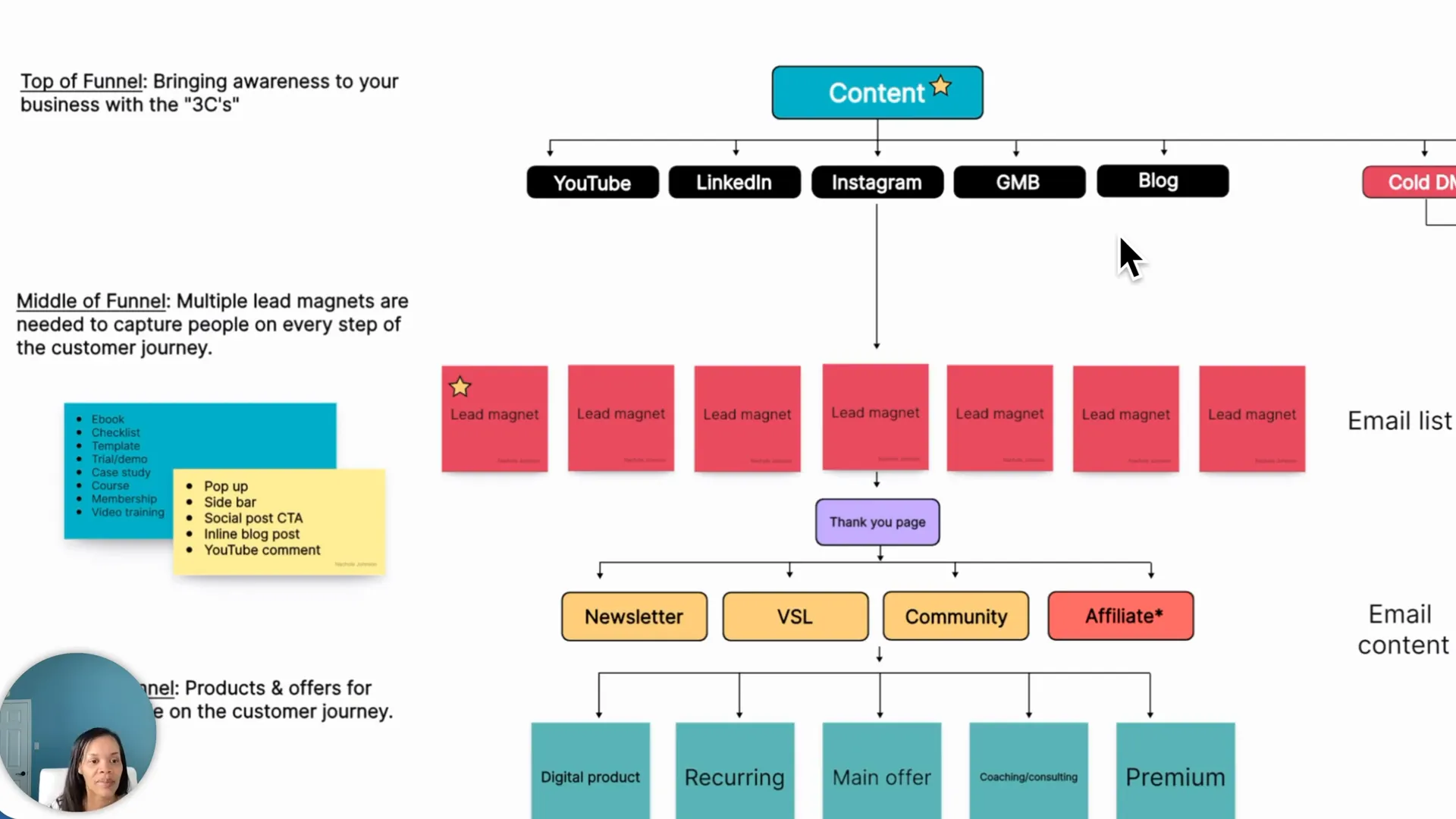
Bottom of Funnel: Converting Leads into Customers
The final stage of the funnel is about converting leads into paying customers. At this point, it’s essential to have a clear call to action. This could be a booking form for a discovery call or a direct link to purchase your product. Here are some strategies to enhance conversions:
- Send follow-up emails to thank leads for downloading your lead magnet and guide them to the next steps.
- Utilize thank you pages post-download that encourage further engagement, such as watching a video or joining a community.
- Offer additional products or services that cater to their specific needs based on their responses during the booking process.
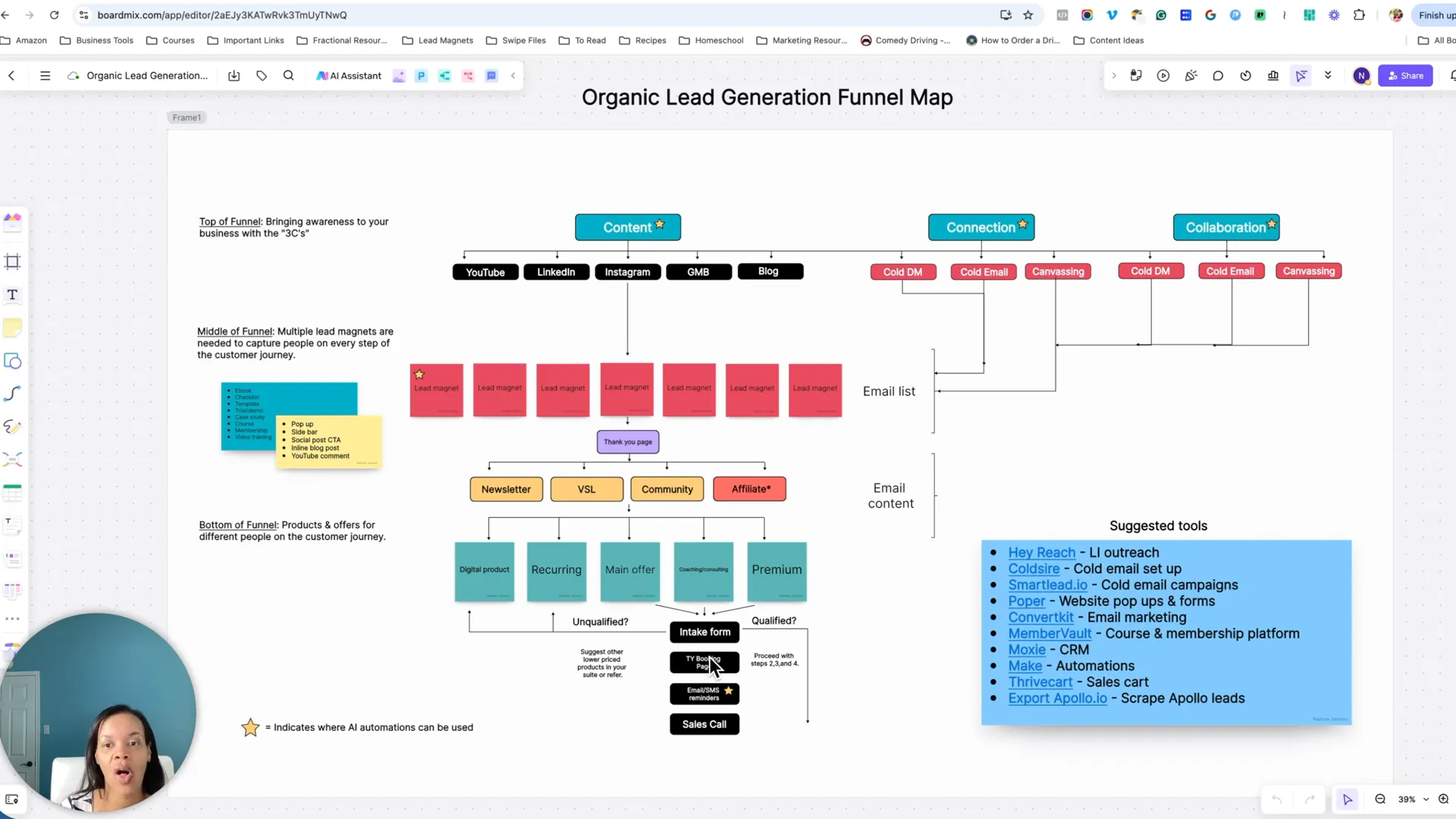
Utilizing Automation for Efficiency
Automation tools can greatly enhance your lead generation efforts. Consider using tools like:
- ConvertKit: For email marketing and managing your subscriber list.
- Moxie: For CRM and sending reminders about booked calls.
- MemberVault: For hosting courses and managing memberships.
- Heyreach: For LinkedIn outreach.
Automating these processes helps save time and keeps your leads engaged without requiring constant manual effort.
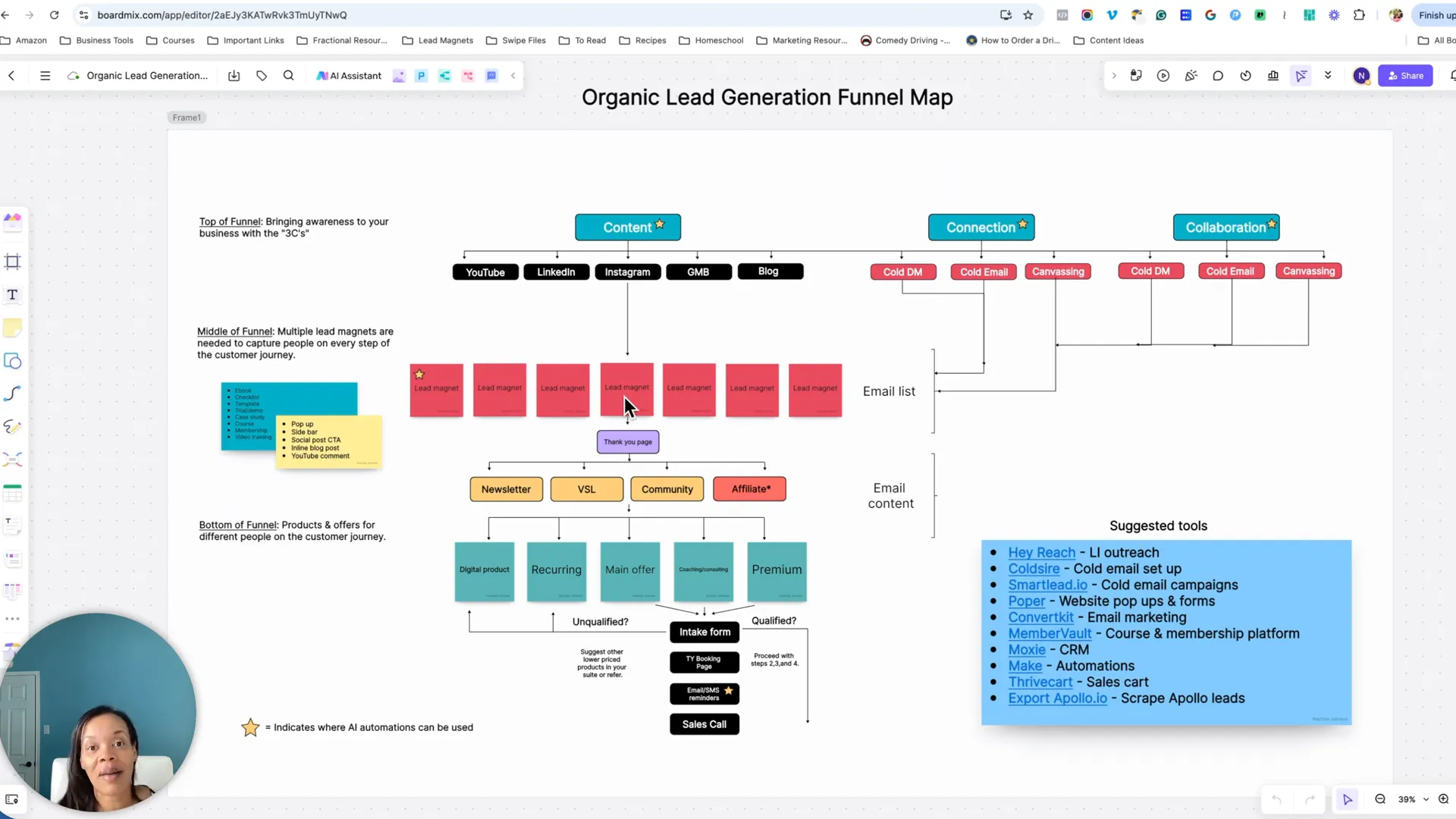
Conclusion: Start Your Organic Lead Generation Journey
Implementing an organic lead generation strategy can significantly impact your business growth. By focusing on content, connections, and collaborations, you can create a robust funnel that nurtures leads from awareness to conversion. Remember, the key to success is consistency and adaptation to your audience’s needs.
If you’re interested in learning more about organic lead generation, check out the Organic Lead Generation Blueprint for a comprehensive guide.
For more insights and tips, follow Nachole Johnson on YouTube, where I share valuable strategies for lead generation and marketing.
View comments
+ Leave a comment